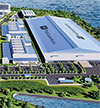Front Line: Amazon’s HQ2 Finalists Reflect a Growing Shift in Geographical Clout
The 20 finalist locations for Amazon’s second headquarters location include several smaller cities that are not typically thought of as technology centers.
Q1 2018
In September, the Internet retailing titan had solicited proposals from North American cities interested in hosting its HQ2. Along with $5 billion in direct investment, Amazon promised up to 50,000 new jobs and millions of square feet of commercial real estate development. A total of 238 municipalities of all sizes submitted proposals by Amazon’s Oct. 19 deadline.
On the list of 20 contenders, the presence of some smaller cities — along with some of the usual, major urban centers — reflects a developing shift in geographical clout, according to Anita Kramer of the Urban Land Institute. Each year, the Institute conducts an Emerging Trends in Real Estate survey among more than 2,000 real estate experts, including investors, fund managers, developers, property companies, lenders, brokers, advisers, and consultants. The survey includes a “Markets To Watch” section ranking 78 metro areas or markets in the U.S.
Within the last four years, the Institute staff have noticed “smaller markets really starting to dominate,” supplanting some larger markets that were formerly ranked in the top 10 as “markets to watch,” says Kramer, who is senior vice president with the Institute’s Center For Capital Markets and Real Estate. Those include cities such as Indianapolis; Columbus, Ohio; Nashville; Austin; Denver; and Raleigh; and regions like Northern Virginia and Montgomery County, Md. — all of which made Amazon’s list, although some of these metro areas are not typically thought of as technology centers.
“We see that the market is showing more faith in some smaller markets (around two million population) where growth can take place,” Kramer explains. “They may not be as densely populated and expensive as bigger cities, and they are providing things people are quite interested in having, like lower cost of doing business, and lower living costs.” A number of those growing metro areas have also developed “walkable” urban centers that can offer some of the amenities and conveniences of big-city living, Kramer notes. “They are now offering some of the amenities older, bigger markets have been known for.”
Another common feature is that those so-called “18-hour cities” (as opposed to “24-hour cities” like New York and Los Angeles) “tend to have a technology presence as part of their total economic base. And they have the kind of workforce and talent companies are looking for,” Kramer adds.
On the list of 20 contenders, the presence of some smaller cities — along with some of the usual, major urban centers — reflects a developing shift in geographical clout. Anita Kramer, Urban Land Institute The presence of major institutions of higher learning was another criterion specified by Amazon. Those high-ranking colleges and universities that supply well-educated workers also enrich communities in other ways, Kramer points out. “Companies assume those colleges and universities will be a source of talent and partnership. To bring people together in the right place can be terrific for businesses.”
Not all of the cities vying for the prize specifically announced what they were offering. But the Seattle Times gathered some interesting details on proposals. New Jersey offered Amazon $7 billion to build in Newark, never considered a “new economy” destination. Chicago offered $1.32 billion in income taxes from Amazon employees for locating there, the newspaper reported. In the smaller city category, Chula Vista, Calif., offered Amazon 85 acres of free land, a $100 million value, and a 30-year property tax exemption, worth about $300 million.
Perhaps the most unconventional offer came from Fresno, Calif., which proposed putting 85 percent of all Amazon-generated taxes and fees into a special fund. A board appointed by the city, half comprised of Amazon executives and half of city officials, would decide how to spend the funds on housing, roads, and parks as well as in and around the Amazon campus.
Amazon has not set a date for announcing its next group of remaining contenders, but cities and states around the U.S. are eagerly awaiting the results.
Project Announcements
Australia-Based Aquatic Leisure Technologies Group Plans Opp, Alabama, Manufacturing Operations
12/11/2025
Teradyne Plans Wixom, Michigan, Robotics Operations
12/11/2025
Robinson Plans Altoona, Iowa, Manufacturing Operations
12/11/2025
BioTouch Expands Columbus, Georgia, Operations
12/11/2025
Natrion Plans Erie County, New York, Battery Components Operations
12/11/2025
Czech-Based GZ PrintPak Expands Mount Pleasant, Wisconsin, Manufacturing Operations
12/11/2025
Most Read
-
The Workforce Bottleneck in America’s Manufacturing Revival
Q4 2025
-
Rethinking Local Governments Through Consolidation and Choice
Q3 2025
-
First Person: Filter King’s Expansion Playbook
Q3 2025
-
Lead with Facts, Land the Deal
Q3 2025
-
How Canada Stays Competitive
Q3 2025
-
Investors Seek Shelter in Food-Focused Real Estate
Q3 2025
-
America’s Aerospace Reboot
Q3 2025


